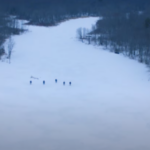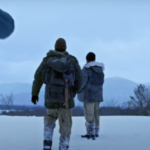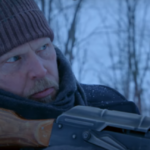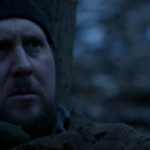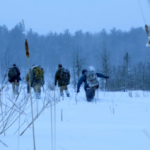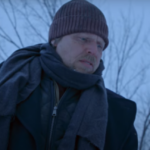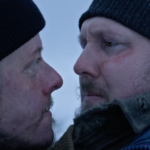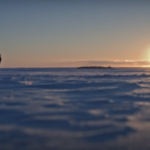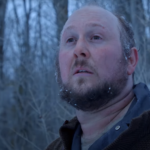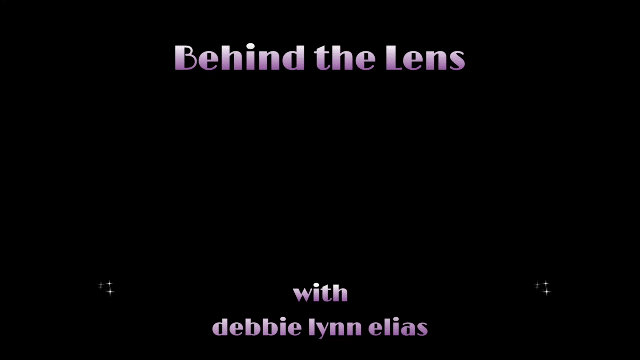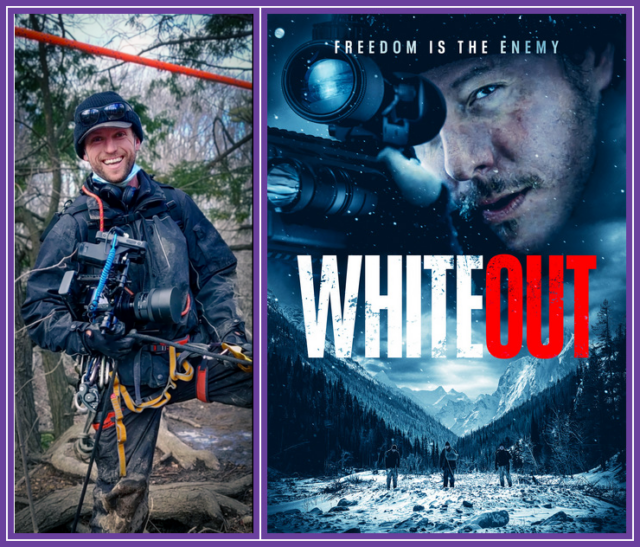
A fascinating in-depth conversation with stuntman turned director/editor/co-writer DEREK BARNES discussing the challenges and minutiae of making Derek’s thriller WHITEOUT.
SYNOPSIS: After escaping a brutal Russian labor camp, three men must overcome the treacherous wilderness and each other, as their journey home turns into a brutal fight for survival.
Directed by DEREK BARNES and written by Derek Barnes, James McDougall, and Douglas Nyback, WHITEOUT stars James McDougall, Douglas Nyback, Joel Labelle, Ian Matthews, Dru Viergever, and Jonathan Goad.
A stuntman for more than a decade, DEREK BARNES slowly seguewayed into directing with several shorts (one of which was essentially a proof of concept for WHITEOUT) and some television episodic before making the leap into director of a feature narrative. Compared to his stunt work, directing requires patience and collaboration with the film’s crew, both for which Derek was well-rewarded given what he delivers with WHITEOUT.
With areas in Calgary and the Saskatchewan River Crossing serving as a substitute for areas in and around the mountainous, snow-covered desolate and foreboding area of a Soviet gulag, the first hurdle in making WHITE OUT was met in keeping with James McDougall’s original idea for a story inspired by the true story of the “walking supply” in Russian gulags. With locations firmly in place, casting was crucial due to the very nature of the story and the inherent dangers of the locations. The film’s unique twist (no spoilers here!!) involves a gruesome scene that required careful planning and consultation with a prosthetics artist. Emphasizing the importance of authenticity, in addition to practical locations, much of the challenging and difficult stunt work you see on screen was performed by the actors themselves instead of stuntmen. Calling on the talents of cinematographer Russ De Jong, the film was designed for natural light and involved a mix of RED cameras and drones. Barnes also reflected on the challenges of directing a feature film compared to his stunt work, highlighting the need for patience and collaboration with the crew.
As we dug into the “making of” WHITEOUT, Derek and I left no stone unturned as we discussed in detail, among others:
- developing a visual style and grammar that would best capture the rugged, remote locations and the physical struggles of the characters
- choosing cameras and equipment that would allow for agility and mobility in the remote locations, using the RED Komodo and DJI Ronin-S gimbal to get dynamic handheld shots
- scouting locations extensively to find the perfect spots that evoked the right mood and tone for the story
- working with cinematographer Russ De Jong to develop the visual grammar by planning shots and sequences in advance to make the most of the limited time and access they had at the remote locations; scheduling shots based on the position of the sun and weather conditions
- rough editing during shooting and putting together sequences quickly so they could identify any additional pickup shots needed before losing access to locations
- working early on with composer Joshua Hemming and having him provide temp tracks that informed the visual style as Derek and Russ scouted locations
- creating a visceral, immersive experience that connected the audience directly to the characters’ physical struggles
- casting; actors had to have the necessary skills to perform the demanding stunts and action sequences authentically; a challenge was casting the role of Anthony as they needed someone who could convey the necessary menace and force, while also being subtle enough for the character’s shift to be believable; casting Joel Labelle as Anthony, who was a friend of Derek’s and who had the right skill set as a stunt performer, helped them achieve that; lead actor James McDougall as Henry had to undergo extensive preparation, like doing ice baths for a year, to be able to perform the grueling physical challenges required. The remote and dangerous filming locations also necessitated casting actors who could handle the rigorous conditions. On top of the need to meet the physical challenges, each actor had to embody the role emotionally.
- requiring a score that would complement the observational, visceral nature of the visuals and story, and enhance the sense of immersion and tension; themes and motifs needed to evolve and shift along with the changing dynamics and emotions of the characters as the story progresses and convey a range of feelings, notably with the character of Henry as he goes from initial trepidation to growing determination; score needed a raw element that matched the harsh, unforgiving landscape and be cohesive in tone and style
- developing a musical approach that seamlessly blended with the visual storytelling as it played a crucial role in drawing the audience into this challenging, unpredictable journey
- the editing process; wearing the hats of editor and director while a challenge, proved invaluable; rough editing more sensitive or important sequences during the shoot that allowed Derek to make adjustments during the shoot and get a sense of what he had and what he still needed; the majority of editing was after principal photography was completed as Derek could then “fine-tune the pacing, transitions, and overall narrative flow”
- crafting and creating the extremely visceral elements of the film; ensuring the makeup and prosthetics were achievable; determining the specifics as to which body parts can be injured or removed and still have the character survive; consulting medical professionals in the development stage; choreographing and filming the visceral midpoint scene in a way that would have the desired emotional impact on the audience, raise the stakes, and shift the film’s dynamics
- balancing the gruesome elements with the overall tone and storytelling
- lessons learned as a filmmaker and storyteller
- and more!
TAKE A LISTEN. . .
by debbie elias, exclusive interview 11/15/2024
WHITEOUT is available on digital and On Demand on November 22nd.

